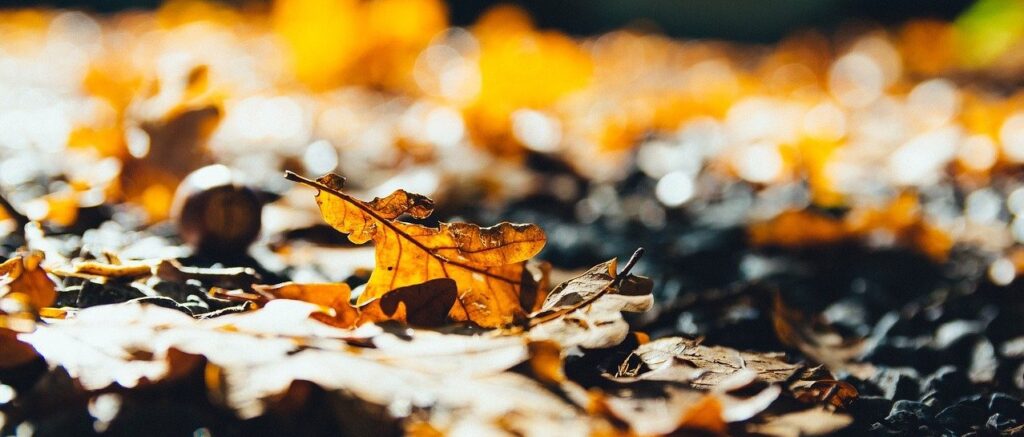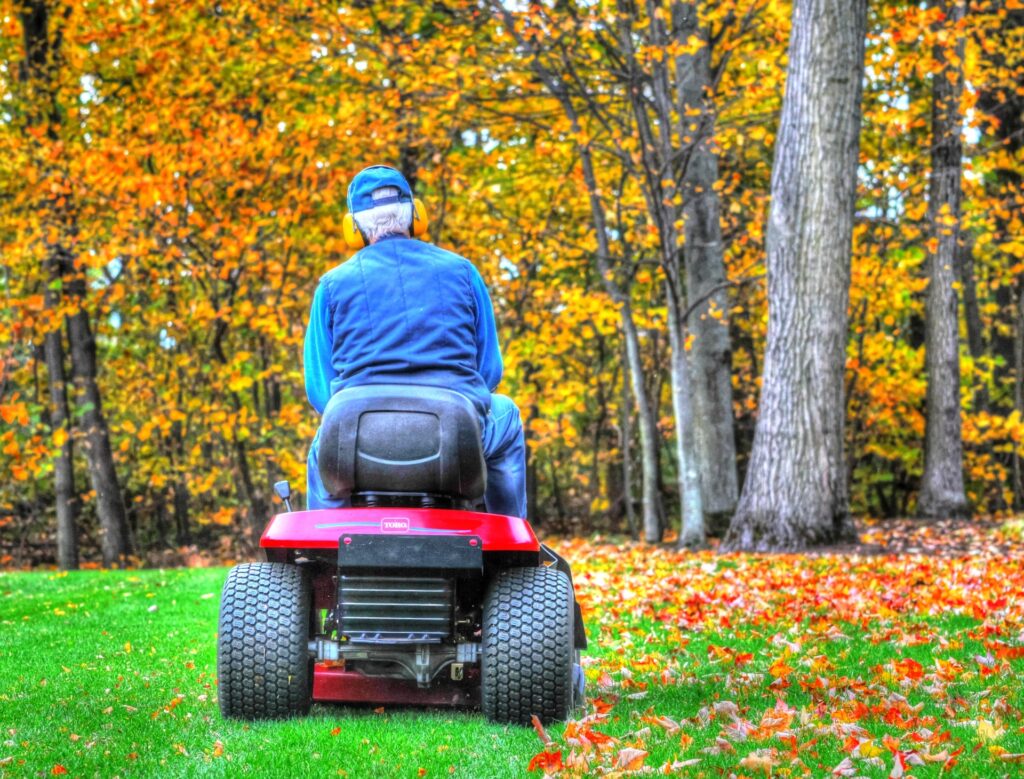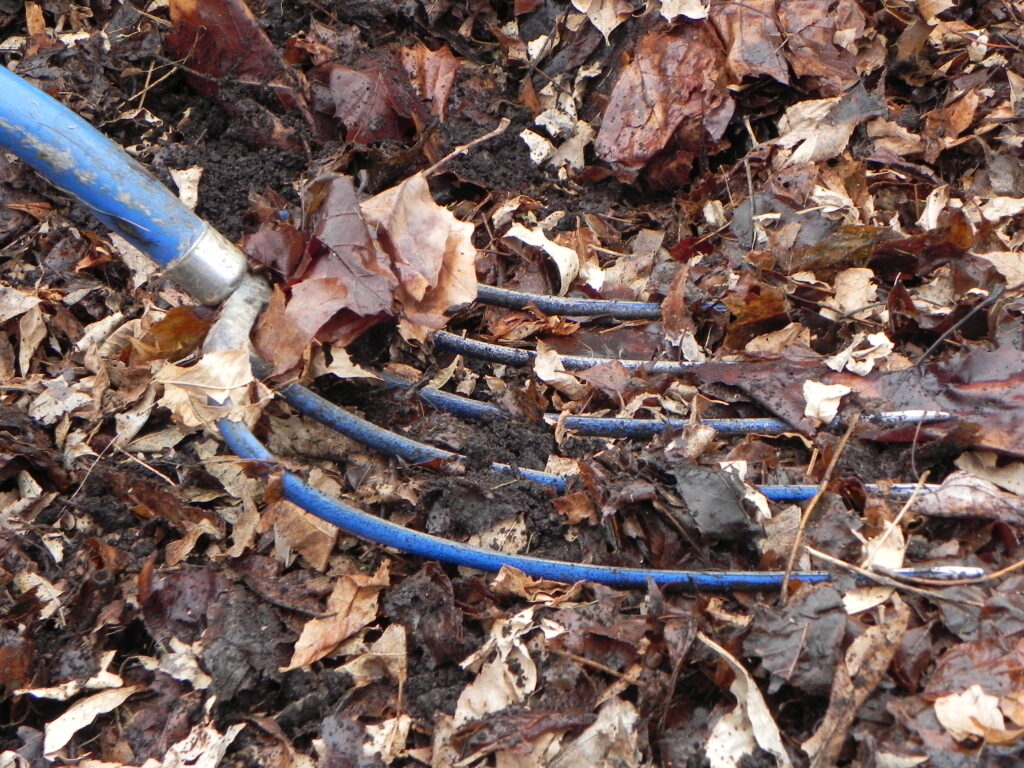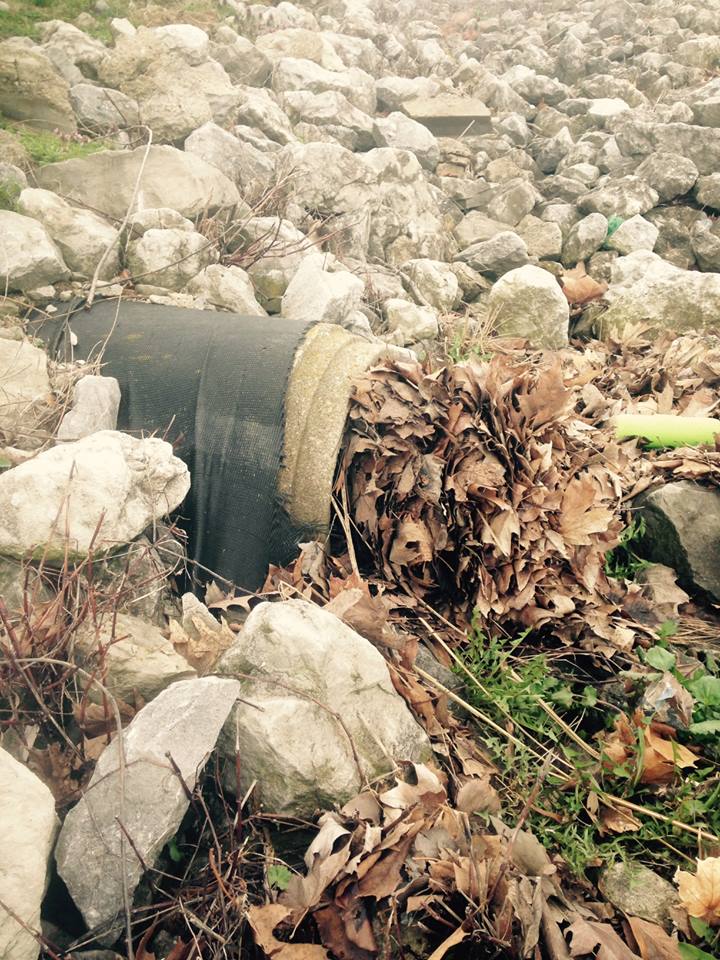Engulfed in Leaves? 3 Options for Dealing with your Trees’ Autumn Offerings
by Carrie Brown, Engineering Technician
This week we wrap up our series on leaves by examining the methods and benefits of utilizing the fallen ones!

I don’t know about you, but one of the keystone autumn memories I cherish from my childhood is raking leaves into an enormous pile…only to wreck my efforts by diving into them.
Of course, this would happen repeatedly until my father would declare the scattered mess off limits and hurry me inside to clean up.
As I got older, the task of raking lost its allure and became more of a chore, so as an adult, I’ve become a bit savvier when dealing with autumn’s leafy offerings.
Engulfed in leaves? Here are some options!
1. Leave the Leaves!
Option one, and likely the easiest route, is to simply leave the leaves where they fall!
If your yard is scattered with black cherry, locust, or other broadleaf species that have mostly smaller leaves, there may not be much action to take after they fall.
In the case of maple, oak, and other trees with larger foliage, however, a bit of mulching may be in order.
Use a lawnmower to shred the leaves into dime-sized pieces.

There are several benefits to gracing your grass with this mulchy mixture:

2. Compost to Feed Future Plants
If your yard is rather arborous and fallen leaves are too thick to mulch with a lawn mower, it may be necessary to turn to plan B: Collect and compost leaves in a designated location.
Composting is a process in which microbes break down organic materials into a nutrient dense, soil-like material.
When done correctly, leaves and other fall garden debris can be composted and ready to use by late spring.
This is a great option for gardeners with the desire to build their own rich planting medium.

In the case of leaf piles, size and location matters!
A pile that is 3’ x 3’ x 3’ is manageable and large enough to maintain the heat needed for the composting process. Make as many piles as necessary, choosing a shaded site with good air flow.
“Feed” your compost pile throughout the fall season by adding freshly fallen leaves to a pile of older leaves.
You can also supplement by adding other natural materials you may have laying around such as grass clippings, garden debris, and kitchen scraps. (It’s important to note there are a number of materials that shouldn’t be added to backyard compost piles, such as animal products, that will attract pests and take too long to compost.)
Maintain your compost by keeping it moist and oxygenated.
Water is needed for the composting process, so it may be necessary to add water to your pile. Additionally, compost requires aeration. This can be accomplished by occasionally turning the pile with a spading fork or other garden tool.

Additional information on backyard composting can be found in OSU Extension’s Composting Series.
3. Utilize a Leaf Pickup Service
If you don’t have the space to compost your leaves and live in an area that offers leaf pickup, this service may be a good option. There are some important tips to remember when readying your leaves for collection however.
Keep yard waste, including leaves, grass clippings and garden debris, out of drainage ditches and storm drains.
If you caught our earlier article on stormwater, Only Rain Down the Drain, you likely remember that everything that enters a storm drain is ultimately outletted, untreated, into a local water body. Leaves, in particular, can be very problematic for storm sewer systems so never leave them in the path of stormwater. Even if leaves are left behind, water filtering through can become rich in nutrients. When this “leafy brew” makes its way into rivers and streams it can cause an overgrowth of algae and wreak havoc on water quality.

These same rules should also be followed in rural ditches and waterways.
Avoid piling leaves, grass clippings, etc. in drainage ditches and grassed waterways. Doing so blocks the natural path of water and can result in flooding and erosion.

When bagging leaves and yard waste, use biodegradable paper bags.
Paper is a better option, as plastic trash bags can take many years to break down. Better yet, designate a trash can for yard waste and mark it appropriately.
Specific leaf pickup guidelines for Fairfield County communities can be found below:
